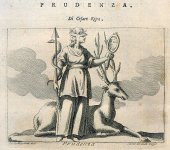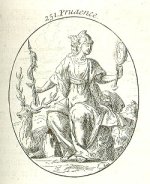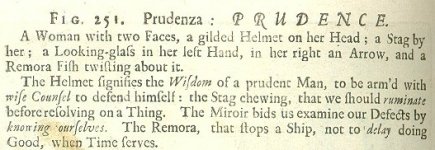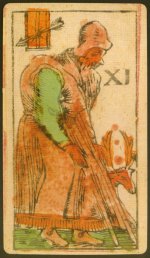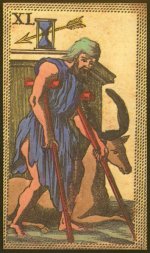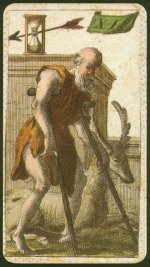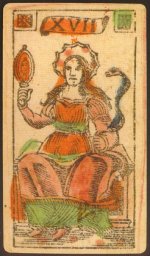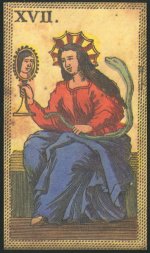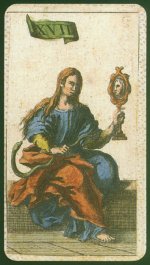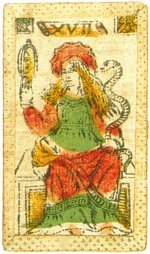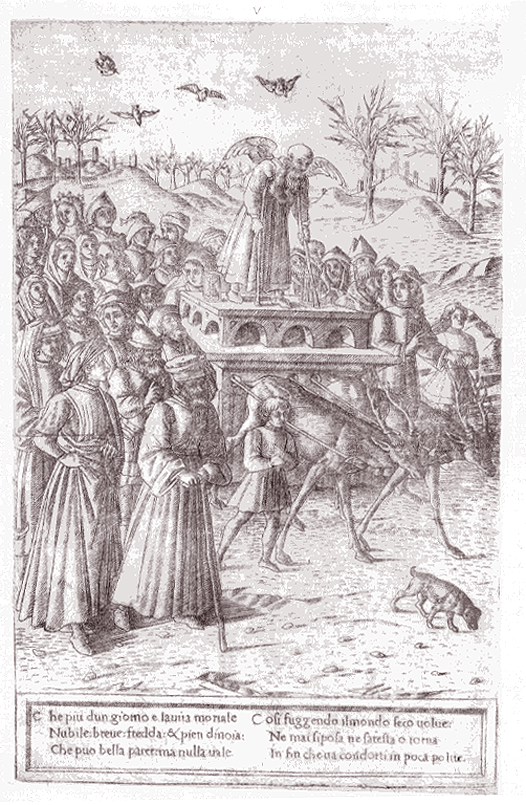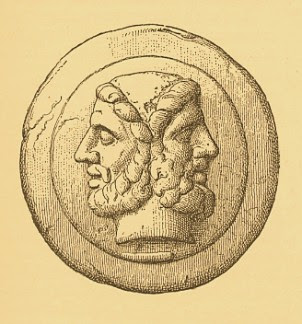firecatpickles
The cardinal virtues are so-called because they came first, from pre-Christian times. So we have the "cardinal" virtues of Justice, Strength, Temperance and Prudence. Of these, the first three are also referred to as the "Active Virtues" since it requires action of the body and not mind to accomplish. The last one, Prudence is an "Intellectual Virtue" and is part of the religious canon of the Eccesiastical Virtues of Faith, Hope, and Charity (i.e., "Love" as per "the of highest of virtues" ala the Gospel). There is an overlap here and some confusion.
If we go further back, to Aristotle, we see a great many more virtues. I think that the Italian Minchiate is based on these Aristotlean virtues (can you see Aristotle's little head peeking out of that Magician card, anyone?)...
See Verbal and Visual Representation in Fourteenth-Century France
Claire Richter Sherman
UNIVERSITY OF CALIFORNIA PRESS
Berkeley · Los Angeles · Oxford
© 1995 The Regents of the University of California
If we go further back, to Aristotle, we see a great many more virtues. I think that the Italian Minchiate is based on these Aristotlean virtues (can you see Aristotle's little head peeking out of that Magician card, anyone?)...
- Friendship (V. Love)
- Temperance (VI)
- Strength (VII)
- Justice (VIII)
- Felicity (VIIII. The Wheel)
- Magnaminity (X. The Chariot)
- Generosity (XI. Time)
- Intelligence (Star)
- Sapience (Moon)
- Wisdom (Sun)
- Science (World)
- Art (Fame)
See Verbal and Visual Representation in Fourteenth-Century France
Claire Richter Sherman
UNIVERSITY OF CALIFORNIA PRESS
Berkeley · Los Angeles · Oxford
© 1995 The Regents of the University of California

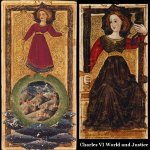

_ca_1490.jpg)
